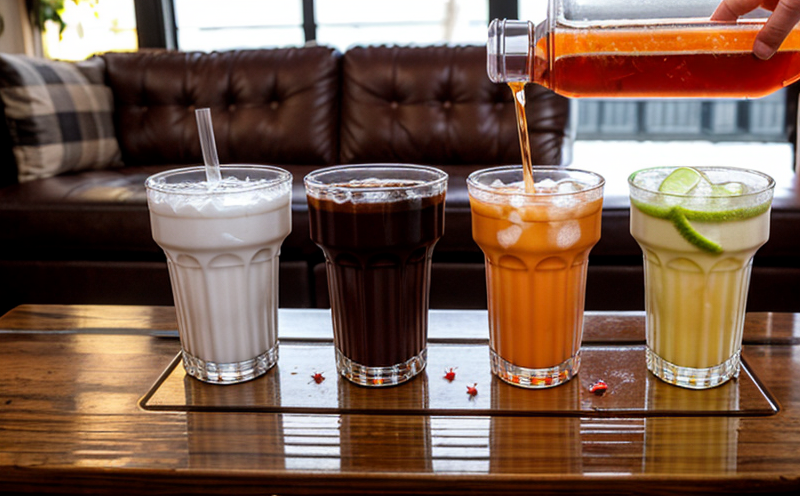FDA Guidance Caffeine Quantification in Energy Drinks
The Federal Food, Drug, and Cosmetic Act (FDCA) regulates caffeine content in food products, including energy drinks. This regulation aims to ensure that caffeine levels are consistent with the intended use of these products and do not pose a health risk to consumers. The FDA's guidance on caffeine quantification is critical for manufacturers, quality managers, compliance officers, and R&D engineers who need to verify product specifications and ensure regulatory compliance.
The testing process involves several steps: sample collection, preparation, analysis using validated methods, and final reporting of results. Compliance with FDA guidelines ensures that energy drinks meet the specified caffeine content levels as labeled on the packaging. This is particularly important for products marketed towards specific age groups or intended use cases.
For instance, if a product claims to contain 150 mg of caffeine per serving, it must be verified through accurate quantification methods. Inaccurate labeling can lead to health risks and potential legal issues. Therefore, laboratories specializing in FDA guidance for caffeine quantification play a crucial role in ensuring that products comply with regulatory standards.
Understanding the specific requirements outlined by the FDA is essential for any company involved in energy drink production or quality assurance. The following sections will delve deeper into how these tests are conducted and why they matter.
Scope and Methodology
| Step | Description |
|---|---|
| Sample Collection | Collections must be representative of the batch or lot being tested. Samples should include both liquid and solid components if applicable. |
| Preparation | The sample is ground to a fine powder, then extracted using an appropriate solvent such as methanol or ethanol. The extraction method may vary based on the specific requirements of the FDA guidance document being followed. |
| Analytical Procedure | Caffeine concentration is determined via high-performance liquid chromatography (HPLC). This involves injecting the sample into an HPLC instrument, where it separates according to molecular weight and polarity. The amount of caffeine present in each fraction is quantified. |
| Result Analysis | The results are compared against the labeled value provided by the manufacturer. Any discrepancies must be investigated further to determine whether they are due to natural variability or potential errors during sampling or analysis. |
| Reporting | A detailed report is generated that includes all relevant data points, including but not limited to sample identification information, extraction conditions, chromatographic peaks observed, and calculated caffeine concentrations. This document serves as evidence of compliance with FDA regulations. |
Why Choose This Test
- Ensures Regulatory Compliance: Adhering to FDA guidelines helps prevent non-compliance issues and potential recalls. It also protects brands from reputational damage.
- Increases Consumer Trust: Accurate caffeine labeling fosters trust between producers and consumers, enhancing brand loyalty.
- Promotes Product Safety: Ensuring correct caffeine levels reduces risks associated with excessive intake, which could have serious health implications.
- Aids in Quality Control: Regular testing allows companies to maintain consistent product quality across different batches or production runs.
Customer Impact and Satisfaction
- Enhanced Brand Reputation: Compliance with FDA regulations can significantly improve a company’s reputation, leading to increased sales and customer satisfaction.
- Potential Legal Protection: By ensuring that products meet regulatory standards, companies are less likely to face legal challenges or fines related to labeling discrepancies.
- Better Product Quality: Regular caffeine quantification tests help maintain high product quality throughout the production process.
In summary, choosing this test ensures not only compliance with FDA regulations but also enhances overall customer satisfaction and brand reputation. It provides peace of mind for both producers and consumers regarding product safety and accuracy.





